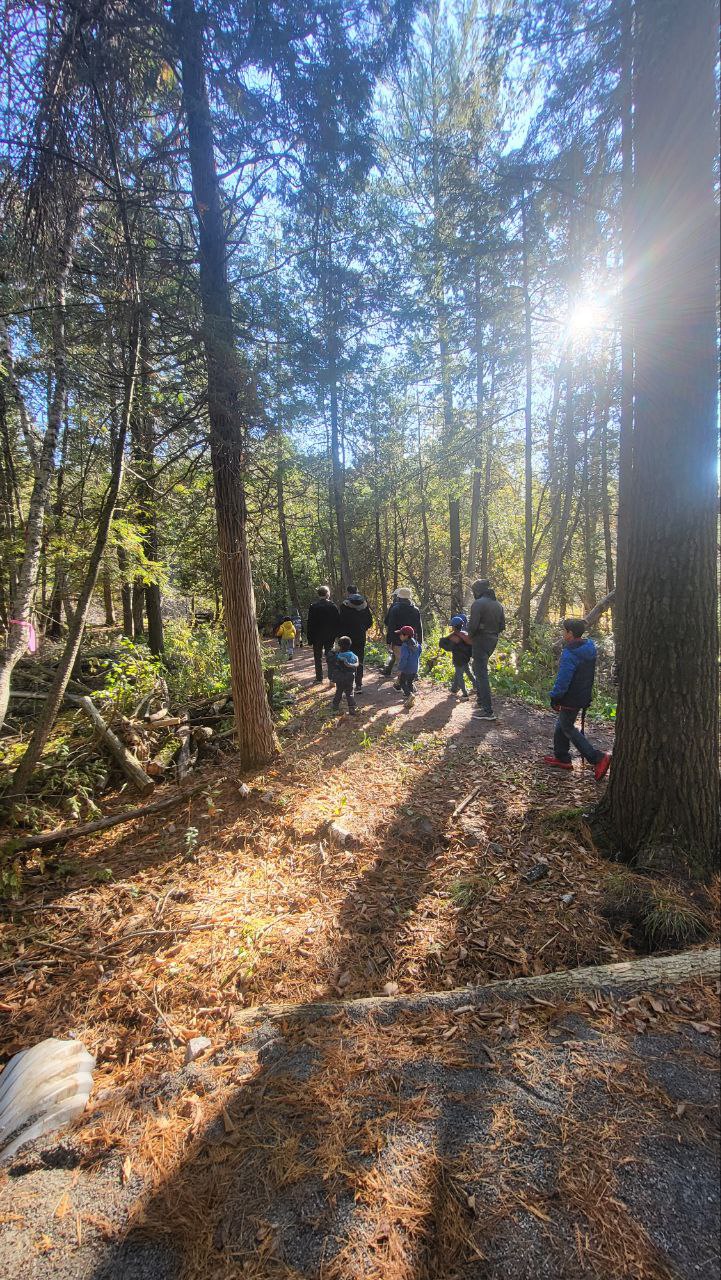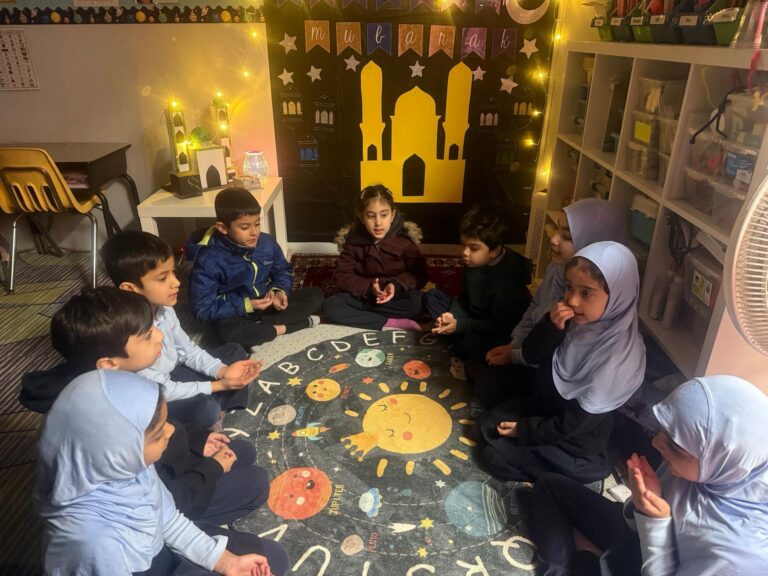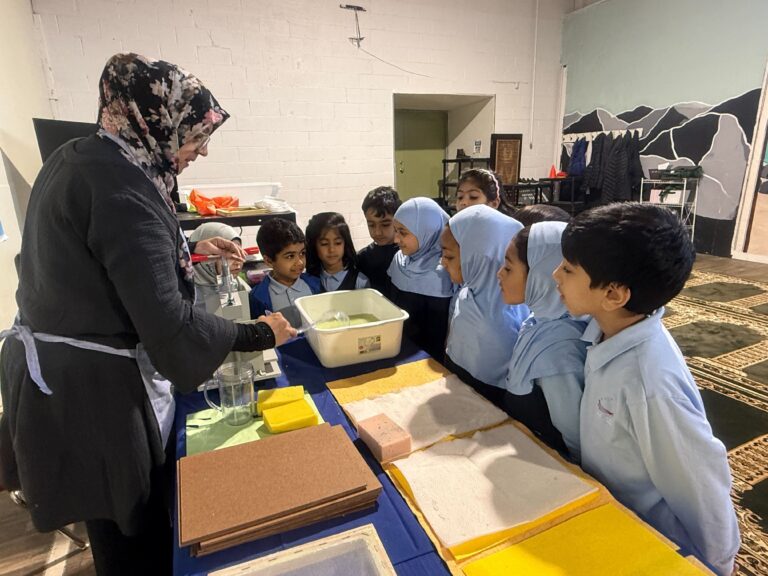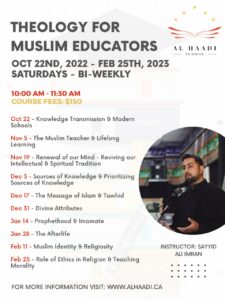Click to download the full PDF file
During the first week of school, students began their STEM Club journey with the Prophet (p) at the Cave of Thawr. Each subsequent week, they continued the journey with him (p) by tackling a new STEM challenge until they arrived in Medina. The Hijra of the Prophet was a turning point in human history:
- 1st time the Muslims could end secrecy about their faith & establish and practice their religion freely
- Marks the beginning of the Islamic calendar
- Gave rise to Islamic civilizations and thought
- Model of an ideal system of governance
The Hijrah Story: In the year 622 AD, the Prophet (p) was commanded to migrate from Makkah to Medina in the secret of the night to avoid persecution by the Quraysh. Imam Ali (a) slept in his bed to distract the enemies while the Prophet (p). began his migration. However, the Prophet (p) has to be very caution about his journey and has to use his intellect on the best and most efficient ways to carry out this journey, so he can get to Medina without being killed, either by enemies or elements of nature, like lack of water, sunstroke, animal attacks, and also pack his essentials in a way that is light weight and not slow him down.
Learning Outcomes: Through the story of Hijra Cave of Thawr, students were challenged to understand the following science concepts at work, and recreate the story of Hijrah through scientific models, over 4 weeks:
- Physics: Strength & stability of structures, tensile strength
- Biology: Spider webs, bird nests, camouflage
- Critical Thinking: How nature has been designed to be available to mankind to seek solutions for survival
- Faith: Understanding the Hijrah story while seeing Allah’s hikmah through nature.
STEM Challenge Week 1: The Cave of Thawr as Protection
Challenge 1: Build the Cave
Story: Allah, the Wisest and All-Knowing, knew that one day the most important migration would happen – the hijra of the Prophet (p), so He commanded the angels to build a strong cave on a rocky mountain, on the route from Makkah to Madina, which the people referred to as the Mountain of Thawr or the Cave of Thawr. You – the appointed helpers – with the wisdom of the elements in science, are now going to build the cave that will one day be used by the Prophet (p) to protect him and the message of Allah (swt) from the enemies.
Science Concepts: Structural engineering — how caves provide shelter.
Materials Required:
Grades 1-4:
- Lego plates and blocks (miniature model of the cave)
Testing: Cave should withstand 2 forces: Earthquake (vibration table test) & weight bearing (being crushed with weight bags).
Grades 5-8:
- Cardboard box or shoebox (as the cave)
- Stones, clay, or crumpled newspaper (to make a rocky texture)
- Tape/glue
Testing: Students attempt to create a stable cave that can withstand a simulated sandstorm (blown by a fan – wind test) and remain water-resistant. Additionally, students can be challenged to test the temperature and humidity in the cave (using a thermometer and a hygrometer).
STEM Challenge Week 2: The Spider’s Web
Challenge 2:
Grade 1-3: Build a Bird’s Nest
Grade 4-5: Build the Spider’s Web
Grade 6-8: Build Spider’s Web and Nest (from materials found in nature)
Story: When the Prophet (p) entered the Cave of Thawr during the Hijrah, Allah (swt) sent a tiny spider to spin its delicate web across the cave’s entrance. The enemies of the Prophet (p), upon seeing the web, assumed no one could have entered the cave without breaking it. The fragile-looking web became a shield, stronger than iron by Allah’s command, protecting the Prophet (p) and Islam’s future. Now, as Allah’s helpers, you will recreate this web while understanding how strength is often hidden in what appears to be weak.
Alongside the spider, Allah (swt) also sent a pair of doves to guard the Cave of Thawr. The doves built a nest at the entrance and laid eggs, making it appear as if no one had passed through for a long time. The enemies of the Prophet (p) saw the nest and turned away, thinking the cave was empty. This simple bird’s nest became a sign of Allah’s wisdom: even the smallest of His creatures can shield the greatest of His Prophets. You are now going to build a dove’s nest, learning the science of how birds weave twigs and grass into strong shelters for their eggs.
Science Concepts: Tensile strength of different materials — spider silk vs man-made materials.
Spider’s Web
Materials Required:
- String, yarn, or thread
- Paper clips, straws, or dowels (to hold the frame)
- Small beads or buttons (to test strength)
- Glue / tape
Testing:
- Install the web across the entrance of the model cave.
- Place pebbles or beads onto the web one at a time and test how many it can hold before sagging, breaking, or collapsing.
- Compare different materials (cotton string vs yarn vs nylon thread) to see how strength and flexibility change.
Bird’s Nest
Science Concept: Birds’ nest engineering (structural engineering), weight distribution & weaving.
Materials Required:
- Twigs, straws, paper strips, pipe cleaners, or string
- Small stones or clay balls (to represent eggs)
Testing:
- Weight-bearing test: How many “eggs” (stones/clay balls) the nest can hold before collapsing.
- Shake the surface or blow air to simulate wind — does the nest hold together?
- For older students: test waterproofing by sprinkling water on the nest and observing whether it collects or drains away.
STEM Challenge Week 3: The Animal’s Trap
Challenge 3:
Grade 1-3: Build an animal trap for small animals – scorpions, snakes, bearded dragons
Grade 4-5: Build an animal trap for big animals – hyenas, leopards
Grade 6-8: Build weapons with long-range thrust – at least 4 meters and above, and an animal trap (big or small animal).
Story: After demonstrating tawakkul (reliance) on Allah and relying on His wisdom to protect him, Prophet Muhammad (p) relied on the wisdom and critical thinking abilities that Allah bestowed on human beings. He was always proactive against enemies’ schemes and used the resources he had to devise protection against them. In the Battle of Uhud, he strategically placed 50 archers on a hill to thwart the enemy cavalry as archery was the “long-range weapon” of the time.
Furthermore, to travel in the desert required special skills such as protecting yourself from life-threatening animals, from small ones such as snakes & scorpions to big ones such as hyenas. Animal traps are also important as a food source that provides protection against hunger, a crucial skill when traveling long distances in the desert. However, since the Prophet was merciful to all beings, there is no evidence of him hurting any animals.
1) Animal Trap (big and small):
Science Concepts: Forces (push vs pull), levers and balances, potential and kinetic energy
Materials: String, dowels, cardboard, paper, glue, tape, straws
Testing: Different-sized “animals” will be placed in the trap to test the traps.
2) Long Range Weaponry
Science Concept: Experimental design, stability and durability, motion (potential / kinetic energy), velocity and aerodynamics.
Materials: Strings, Dowels, Tissue rolls, Cardboard, Thick paper, glue, tape.
Testing: Distance, velocity and durability test. Experimental design and Projectile motion test.
STEM Challenge Week 4: Camouflage & Protection
Challenge 4:
Grade 1-4: Design and build camouflage covering against the volcanic mountains and dry (non-fertile) desert landscape of Makkah.
Grade 5-8: Design and build camouflage covering against the desert oasis and fertile landscape of Madinah.
Grade 7-8 Bonus: Make a compass to find Madinah.
Story: As the Prophet (p) travelled from Makkah to Madinah, the landscape shifted dramatically, demanding quick thinking, innovation, and the constant need to avoid detection by enemies and even wildlife. Allah has given many creatures the wisdom to effectively protect themselves by camouflaging, by blending into their surroundings to escape danger. Humans often mimic Allah’s creation and use different camouflage strategies to protect themselves from enemies and wildlife.
Makkah’s terrain was a dry, rocky desert of brown and gray volcanic mountains, where survival meant blending with stone and sand. But nearing Madinah, the scenery transformed into a fertile oasis of date palms, wells, and greenery, requiring new strategies of concealment among trees, shrubs, and cultivated fields. At every stage of the journey, survival depended on careful observation, creative adaptation, and deep trust in Allah, showing how critical thinking and faith work hand in hand.
Your mission is to design and test camouflage that works in both environments: Makkah’s desert mountains (brown and gray rocks, sand, barren land), and Madinah’s fertile oasis (green palms, shrubs, water sources).
Science concepts:
- Landforms & ecosystems: Understanding deserts (Makkah) vs. oases (Madinah).
- Adaptation to environments: How living things survive in different terrains.
- Camouflage & mimicry: How animals use color, texture, and shape to hide from predators. Comparing human problem-solving with animal adaptations.
Testing: Camouflage will be measured by visibility — does it stand out, or does it disappear into the background?
1) Camouflage in Makkah: Create covering or concealment materials against the volcanic dark and dry mountainous region of Makkah.
Materials: Dark paper & fabric, glue/ tape, cardboard, sticks.
2) Camouflage in Madinah: Create covering or concealment materials against green palms, shrubs and the oasis of the city of Madinah.
Materials: Colored papers & fabric, cardboard boxes, glue/ tape, sticks.























































































































































